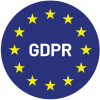Is marketing research relevant for data-led marketers? How does it impact business success in today’s digital-first environment? Why do top marketers rely on it to maximize customer engagement? Do traditional market research surveys still serve as effective channels?
In this article, we decode the ideal marketing research process for the modern, tech-savvy marketer. Got 11 minutes? Dive into this step-by-step guide to approaching marketing research from processes that add CX value to benefits that maximize customer lifecycle value.
What is market research?
We’d say 99% of marketing is understanding the human behind the customer. And marketing research helps you decode things that make this human tick. It lets you explore the many factors that influence your customer; similar to mapping the customer experience across touchpoints.
Effective market research tools and methods help you with the precise insights you need to get an edge in the market – right from competition sentiment to ideal product pricing. Over the years, marketing research has even been synonymous with stellar business insights and even turnarounds.
Take, for instance, the case of LEGO. After struggling to stay profitable in 2003, the toy manufacturer was able to recapture the imagination of customers owing to high-impact market research.
Contrary to what many digital-first marketers think, marketing research isn’t limited to large companies with giant budgets. Whether you are an established mid-size firm or a team of two, consistent marketing research is key to engaging and winning your customers. Don’t worry about investing and training resources.
Depending on your immediate to mid-term priorities, you can choose to limit your marketing research. This may mean understanding evolving pricing sensibilities. Or you may want to narrow down your research to the top 3 purchase triggers for Gen Zs. Using intelligent marketing research tools and methods, you can develop a process ecosystem that is not resource or skill-intensive which will help you find out why you should conduct a market research survey.
The efficacy of your marketing research is shaped by a single factor – the emotional intelligence and design quotient of your marketing research surveys. The metrics and methods you use to analyze customer responses come a close second.
Top benefits of marketing research
Before you get down to developing your marketing research process, you must weigh the top benefits. This lets you arrive at the business value you stand to get from the exercise
Benefit #1 – Retain customer trust
Your customer’s needs and expectations are changing faster than ever. And a growing percentage of them expect brands and businesses to keep pace. As personalization becomes integral to Customer Experience (CX), customers want to do business with companies that put them first.
When a business fails to deliver on this expectation, it loses customer trust. This demands that you invest in a CX-focused marketing research ecosystem. By using effective market research tools and conducting on-point market research surveys, you stand to gain deep, impactful insights into every customer’s psyche. When you leverage these insights to engage with the customer across touchpoints, you earn their trust.
Benefit #2 – Win the ‘speed-to-market’ race
Being the first to own a category or introduce a breakthrough offering always comes with a massive advantage – you can gain a huge market share and forge strong customer relationships before the competition kicks in.
Whether you are weeks away from launching a new offering or want to know the viability of expanding to a new category, market research lets you know where you stand in the context of your competition. This works to your advantage – alter your launch strategy… get your pricing right…invite pre-orders. It lets you build a go-to-market strategy that is far more likely to succeed.
Benefit #3 – Build a strong brand
It takes more than a great product or a powerful marketing campaign to make customers fall in love with your brand. Following a marketing research process consistently gives you access to the many facets that customers will value in your brand. When you engage customers across markets, you arrive at a gold mine of research. It helps you build a brand that caters to the emotional and rational needs of customers.
Right from your innovation and product design team to your sales and finance teams, everyone aligns with a perspective that is rooted in market reality. For instance, it can help you understand how the market is keeping up with customer-first pricing in a subscription economy.
Benefit #4 – Pivot at the right time
The decision to scale or innovate, when implemented in isolation, can be dangerous for profitability. On the other hand, investing in a marketing research process lets you gain significant business velocity
With tech and AI disrupting markets in the most unimaginable ways, strategic market research methods help you move your business in the direction of changing customer needs. The Fujifilm pivot to new verticals outside of film photography remains an industry favorite example in this context. Your marketing research exercise may even point you in the direction of an unconventional collaboration. This makes it critical to approach the process with an open mind.
The marketing research process
The process you deploy can define the success of your marketing research exercise. It also helps everyone on the team see the value in investing and aligning with the preferred method and the results.
Here are some step-by-step examples of the marketing research process:
-
Identify your marketing research goal(s)
You might be surprised how many digital-first marketers tend to miss this crucial step in their marketing research process. Unlike digital marketing, marketing research demands you to gather and analyze data with a clear goal (and even a hypothesis) in sight. Depending on the business scope, you may choose to limit your research to a primary goal or add a secondary goal. For instance, if you are introducing a new paid service, your goal might be to identify the right price point as well as the ideal duration for a free trial.
-
Define the type of marketing research
Your goal will holds a clue to the type of marketing research that will offer you the most relevant insights. If you are looking to understand the customer mindset around product and pricing, primary research often proves to be highly valuable. On the other hand, if you are looking at a brand refresh, a mix of secondary research, along branding research, can go a long way.
-
Design your research framework and methods
Before you can get down to conducting research, define your market research methods – you may want to survey partners and end customers. Or you may choose to interview vendors on competitor sales. Your framework should also include the preferred environment to conduct the research. Would your respondents prefer a private, controlled environment? Or would an uncontrolled/natural environment work best? Answering these questions is key to building an effective marketing research process. Additionally, you can look for market research pitfalls to avoid, too.
-
Map your sample cohorts
Conducting your marketing research with relevant stakeholders is key to effective results. You may want to conduct primary research with offline or online groups that are already mapped within your customer base. If not, you may have to spend some time establishing the demographics and volume of your research sample. Consider an example – how undergraduates respond to the launch of a freemium job portal will be highly different from the expectations of millennials. The sample you choose can drastically give you different marketing research results.
-
Onboard partners and tools
Before you get down to collecting data for your research, spend time evaluating potential partners and tools. Depending on the scale and nature of your marketing research, you may choose to outsource your research to local or subject experts. If you are a CX-focused marketer, you may choose to leverage smart survey tools for a more integrated, result-centric approach to marketing research.
-
Gather data and insights
The most awaited step in the marketing research process – getting down to collecting data. At this stage, ensure you have set up secure channels for data to flow back to you. This is also a top reason why most marketers prefer using digitally integrated market research tools. Unlike offline research, investing in an integrated tool enables you to save time on analysis. Skip poring over research findings for days and weeks. Instead, leverage AI and automation to arrive at business-critical insights.
-
Action change
Have you ever wondered what top marketers do differently to get the most out of their marketing research? They act upon micro insights without a moment’s delay. This is often key to staying ahead of competitors as well as retaining customer confidence. How? By investing in marketing research and survey tools that make sense of data for them.
Types of marketing research with examples
Depending on your business and marketing goal, you can choose one or a mix of marketing research designs to build your research framework.
-
Primary research
Every successful marketer uses this when they need to build a strong case for a big change. Conducting interviews or surveys with stakeholders such as customers and market partners is the most effective way to gain exceptional, practical insights into the market psyche. An excellent example of primary research is inviting your top customers to a beta launch for a new product/service. Get to know their likes/dislikes, pricing comfort, and how it would impact their overall category purchases.
-
Secondary research
Often, stakeholders may not be forthcoming on facts. Or their perceptions may come in the way of unbiased judgment. In such cases, secondary research offers an effective opportunity to gain relevant insights. Or you may want to base your research on data achieved from a large sample, spread across markets. For instance, referring to global and local reports, journals, and other credible sources can be of immense help when exploring services and products that can help mothers dealing with post-partum depression.
-
Exploratory research
This research method is perfect when you don’t need to solve a business problem but want to discover ideas and opportunities. By building your market research around an exploratory framework, you can unlock trends, gaps, and opportunities. For instance, if inspiration for your next big innovation is what you are after, exploratory research will surprise you.
-
Descriptive research
As a digital-first marketer, this might be your biggest pet peeve. Despite making data-based decisions, sometimes, the math doesn’t add up. Descriptive research allows you to study a problem or market condition in great detail. Learn what is keeping your big idea from taking over the market.
-
Causal research
Planning to change your pricing or adopt environment-friendly packaging but unsure how it will impact customer sentiment and sales? Causal research to the rescue. The method lets you understand the cause-and-effect relationship between the variable you intend to change and the one you don’t wish to disrupt.
-
Putting your marketing research results to work
The most high-budget marketing research can fail to give you results if you are not consistent. This demands building an always-on research ecosystem. While your goals and the scale of research may evolve, staying committed to a process is important. It ensures your short-term goals don’t keep you from seeing the bigger picture and capitalizing on it.
Ready to build your marketing research process? Learn how SogoCX can help you build an integrated ecosystem.
Frequently Asked Questions
What is the marketing research process?
Depending on the goal and scale of the research, every marketer’s process may differ. But in essence, it involves taking a structured, step-wise approach to gain deep, precise insights into various or specific market dynamics.
What is the role of marketing research?
In a highly dynamic business environment, market research ensures you are in sync with changing customer preferences, evolving stakeholder sentiment, competitor strength, and other external factors. It allows you to resolve a marketing challenge or unlock new opportunities, depending on your business priority.
Why is the marketing research process important?
Adopting a marketing research process makes it quicker and easier for everyone on your team to action research and act swiftly on the findings. A step-wise framework ensures the results are credible and relevant. This greatly increases the chances of thriving in an immensely competitive market. It can also enable you to compare results each time on a couple of common metrics even if every research’s primary goal is unique.
What are the 7 steps in the marketing research process?
Many marketers choose to create their own steps and framework to arrive at a marketing research process. Broadly, these align to the below 7 steps:
- Identify your marketing research goal(s)
- Define the type of marketing research
- Design your research framework and methods
- Map your sample cohorts
- Onboard partners and tools
- Gather data and insights
- Action change














